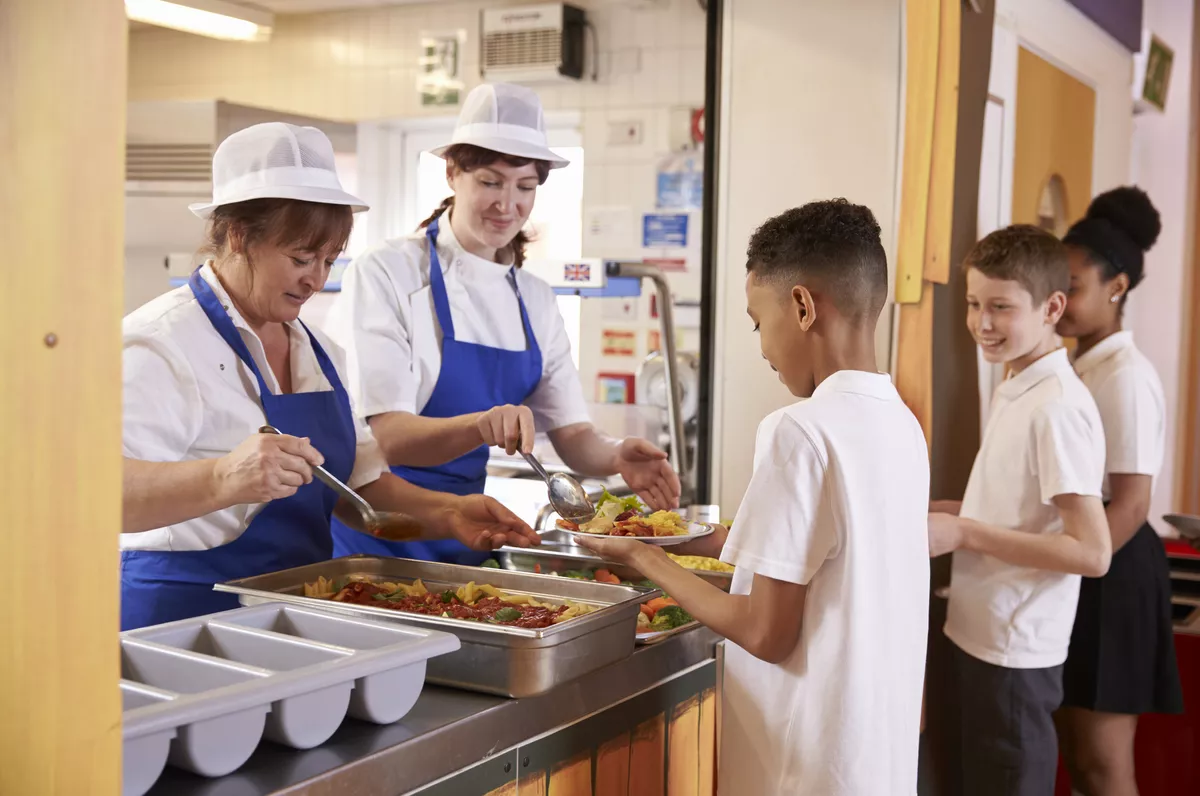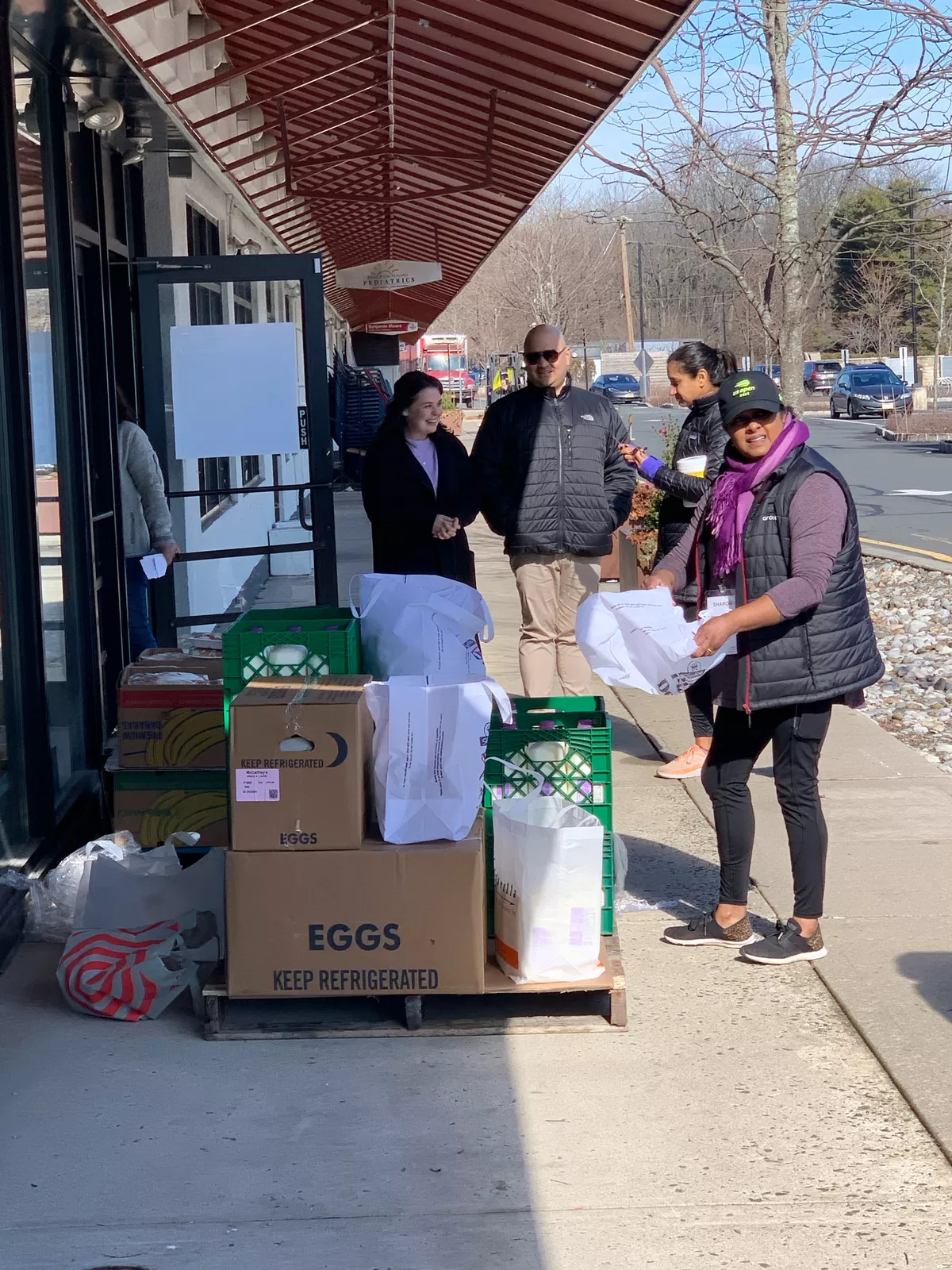👋 Welcome to Starting Early. Every other week, we spotlight new reports, useful news, engaging interviews with people doing important work, and interesting takes on maternal health and early childhood development issues.
It’s often said that “you are what you eat.” And it’s true — a balanced diet of nutritious foods promotes good mental and physical health. Unfortunately, nearly 34 million people in the US, including 5 million children, frequently aren’t able to obtain such foods.
- They face food insecurity— the “lack of consistent access to enough food for every person in a household to live an active, healthy life.”
Rising food costs and the end of federal pandemic supports make it more difficult to put food on the table – especially for families with young children, low-paid households, and communities of color. People who struggle to make ends meet often suffer food insecurity when circumstances force them to choose whether to buy food or pay for housing, utilities, and other necessities.
The Burke Foundation addresses food insecurity through our First 1,000 Days initiatives, which connect families with community food resources through trusted messengers.
Read on and click the links to go deeper.
1 big thing: School meals support child nutrition and well-being

Families with children are nearly 1.5 times more likely to be food insecure than those without — contributing to poor physical and mental health.
The National School Lunch Program (NSLP) is a crucial tool for addressing child food insecurity. Jointly administered by the federal government and states, the program provides free or reduced-cost lunches to nearly 30 million children in public schools, nonprofit private schools, and residential child care institutions.
- President Truman signed NSLP in 1946 — paving the way for such child nutrition assistance as the School Breakfast Program, After School Snack Service, and Summer Food Service Program.
The federal government waived NSLP eligibility requirements during the pandemic and loosened restrictions on food delivery. The number of children served by NSLP increased by 10.1 million in the 2021-2022 school year.
Why it matters: Serving students free meals, regardless of income or other factors, would boost nutrition and healthy child development. Research shows school lunches to be more nutritious than what students are likely to get elsewhere. School lunches are associated with such outcomes as:
- Reduced child obesity among low-income children
- Improved educational performance
- Reduced student absenteeism
While federal legislation to mandate universal free lunches has stalled, a growing number of states are supporting the health and well-being of students with free school meals for all.
- By the numbers: 5 states (CA, CO, ME, MN, and NM) have permanent universal free school meal policies, 4 are providing free school meals through the end of the current school year, and in 23 states pending legislation would provide universal free school meals.
2. Fighting food insecurity

Many efforts are underway to make sure everyone has enough to eat and that what they eat is healthy. We highlight some initiatives below.
Serving Indigenous families: Family Spirit Nurture is a culturally-congruent approach designed for and with Native American families. It promotes healthy infant feeding and childhood development in the first year of life by informing families about such topics as moderating sugar intake and healthy eating for the whole family.
Delivered 3 to 6 months postpartum, Family Spirit Nurture is associated with:
- Reduced infant consumption of sugar-sweetened beverages
- Confidence in knowing when your baby is hungry
An 🍎 a day keeps the doctor away: Through Food Bucks Rx, from the Food Trust, healthcare providers give eligible patients in Pennsylvania and New Jersey $20-$30 a month vouchers redeemable at corner stores, farmers’ markets, and grocery stores.
In Camden, NJ a Food Bucks Rx partnership between the Food Trust, Virtua Health, and Roots to Prevention gives out vouchers redeemable at mobile grocers operated by Virtua, featuring produce from Camden food growers.
Advancing food equity for Black and brown families: Black adults are 3 times more likely to face family food insecurity than white adults and Hispanic adults are twice as likely.
- Soul Fire Farm, an Afro-Indigenous community farm near Albany, NY, aims to end racism in the food system, using ancestral farming practices to sustainably produce crops and raise livestock. Soul Fire programs serve over 50,000 people annually through trainings for Black and brown farmers, food justice workshops for young people, home gardens for city residents, and other initiatives.
- Solidarity Shares, Soul Fire Farm’s weekly home-delivery initiative, provides people with free vegetables, fruit, medicine, eggs, and meat. In 2022, the program served 225 people and they reported improved health, savings on food costs, and a wider variety of cultural foods.
Two birds, one stone: Several organizations address food insecurity and wasted food together through partnerships with local farms, restaurants, and food-service providers:
- The Farmlink Project delivers fresh produce from farms to food banks nationwide – delivering more than 83 million meals since its launch in April 2020.
- Via text messages, Helpkitchen.org matches food-insecure people in Denver, Detroit, and San Francisco with local restaurants that provide free, hot meals.
- Share My Meals, in Princeton, NJ, collects surplus meals from food-service providers and distributes them to families at their homes and through community partners.
3 questions with NJ “food czar” Mark Dinglasan

We spoke with longtime food advocate Mark Dinglasan, who last year was appointed the first-ever director of the New Jersey Office of the Food Security Advocate. Mark previously was executive director of CUMAC, a New Jersey nonprofit addressing food security though a trauma-informed lens. Here are highlights from our conversation:
What is food security?
A lot of my work in food security is grounded in maternal health and preventing adverse childhood experiences (ACEs) and childhood trauma. True food security exists when all people at all times have economic, physical, and social access to safe, sufficient, nutritious food.
There are 4 pillars for food security talked about in our literature the most: access, availability, utilization, and stability. Access – Are people able to access food physically, socially, economically? Availability – Is food physically available in the areas we serve? Utilization – Does a breastfeeding mom know what foods to eat to increase lactation? Do parents know what foods their kids should eat to get healthier? Stability – Is food sourcing stable enough to withstand shocks to the system, like COVID-19?
There are also 2 emerging pillars for food security important to the work the Burke Foundation does, the work that my office is doing, and work led by anyone who cares about maternal health and making sure kids, moms, and parents are healthy. They are agency and sustainability.
Agency – Do families feel they have the power to participate in a purposeful way in their relationship with food? And sustainability – How do we ensure that the way we’re eating can be sustained for generations? The way we plant, the way we raise our livestock.
What’s a misconception about food security?
Sometimes people use hunger and food insecurity interchangeably. Hunger is a physiological phenomenon. Food insecurity is a social and economic phenomenon.

What’s your vision for creating change through the Office of the Food Security Advocate?
I want to inform policy, collaborate and build consensus in the philanthropic sector, and organize local organizations.
In terms of informing policy, this office is the only one of its kind in the nation, and it sits in the executive branch. This gives me more agility in terms of collaborating with our partners in the Legislature, the governor’s office, and state departments.
Building consensus in philanthropy is important because we can’t expect our grantees to collaborate if we ourselves aren’t collaborating. It’s more than just showing up at a meeting and checking off that box. It’s about how we share common language and understanding so families feel seen.
And that leads me to getting local organizations to work together. Whether you’re a multimillion-dollar food bank or a small domestic violence shelter, how do we make sure that those organizations are at least all saying this is about building community? This is about making sure a mom feels powerful today, tomorrow, next week. If we can do these first 2 pieces — informing policy and getting philanthropy to collaborate — it will be much easier to do the third piece of getting local organizations to collaborate.
My primary job is to make sure organizations on the front lines have the support they need and stay accountable to the communities they’re helping. What I can do is put that work on a pedestal and elevate the community voice.
The roundup
Learn about upcoming events, new funding opportunities, and jobs in maternal and infant health and early childhood:
- Funding opportunity: The Geraldine R. Dodge Foundation will award $500,000 through its open call to support New Jersey organizations focused on racial justice. Applications are due June 20. Register to attend an informational webinar May 25.
- Promote food equity: Support Share My Meals at a food and wine tasting fundraiser in Lawrenceville, NJ, June 6.
- Building a food movement: Applications for the Seeding Power Fellowship are due June 16. Apply to join with leaders building equitable food systems in the northeast.
- Maternal health education: March of Dimes’ fourth annual It Starts with Mom campaign provides resources and maternal health information for new and expecting moms. The May 25 session will focus on information for families during pregnancy.
- Supporting doulas: Register for HealthConnect One’s Birth & Beyond Summit in College Park, MD, June 20-22.
- Medicaid models promoting maternal and infant health: In a new report, the Institute for Medicaid Innovation analyzes Medicaid policies and practices advancing birth equity nationwide. Examples include Medicaid-covered doula programs and a mobile midwifery unit.
